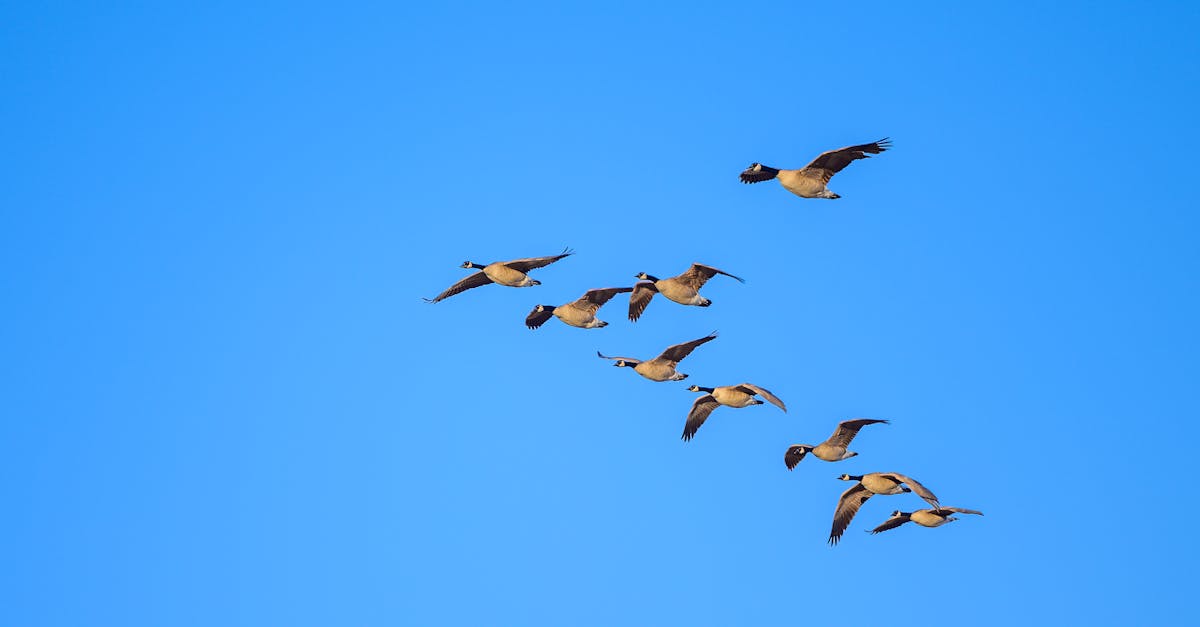Bird migration is one of nature’s most incredible phenomena, showcasing the remarkable adaptability and intelligence of our feathered friends. Every year, billions of birds embark on long journeys across continents, navigating vast distances with precision. But how do they know where to go? This article explores the various methods birds use to find their migration routes.
| Method | Description |
|---|---|
| Genetic Navigation | Innate migratory routes passed down through generations. |
| Sun Position | Using the sun’s position as a compass during the day. |
| Star Navigation | Relying on stars for guidance at night. |
| Magnetic Fields | Detecting Earth’s magnetic field for orientation. |
| Environmental Cues | Observing weather patterns and geographical features. |
| Social Learning | Learning routes from experienced birds. |
| Olfactory Cues | Using smell to identify specific locations. |
Genetic Navigation
Many bird species are believed to possess an innate ability to migrate along specific routes that have been passed down through generations. This genetic navigation is crucial for ensuring that birds return to the same breeding and wintering grounds each year. Young birds often instinctively know where to go, thanks to the information encoded in their genes, allowing them to follow ancestral paths even if they have never made the journey before.

Sun Position
During the day, birds utilize the position of the sun to orient themselves and navigate their migration routes. They have a built-in biological clock that helps them compensate for the sun’s movement across the sky. By understanding the time of day and the sun’s location, birds can maintain a consistent direction, ensuring they stay on course throughout their journey.

Star Navigation
At night, many migratory birds switch to a celestial navigation system, using the stars to guide their way. They can recognize constellations and use them as a map to maintain their migratory path. This method is particularly effective during clear nights, allowing birds to travel long distances across dark skies while relying on the predictable patterns of the stars.

Magnetic Fields
Birds are also equipped with the ability to sense Earth’s magnetic field, which acts as a natural compass. This magnetic navigation helps them determine their position and direction, particularly in areas where visual cues may be limited. Research has shown that birds have specialized cells in their eyes that allow them to perceive magnetic fields, making this an essential tool for long-distance migration.

Environmental Cues
Birds often rely on environmental cues such as weather patterns, wind direction, and geographical landmarks to navigate. They can sense changes in temperature and pressure, which can indicate the onset of seasonal changes. Additionally, they may follow rivers, mountain ranges, or coastlines, using these features to guide their journey and make necessary adjustments to their routes.

Social Learning
Social learning plays a significant role in how some bird species navigate during migration. Young birds often accompany older, experienced individuals on their journeys, learning the routes and important landmarks along the way. This transfer of knowledge enhances their ability to migrate successfully, as they benefit from the experience of their elders, ensuring the survival of migratory traditions.

Olfactory Cues
Interestingly, some birds are believed to use their sense of smell to aid in navigation. Studies have indicated that certain species can detect specific scents associated with their breeding or wintering grounds, allowing them to identify their destination from considerable distances. This olfactory navigation adds another layer of complexity to their migratory behavior, showcasing the incredible adaptability of birds.

FAQ
How do birds know when to migrate?
Birds typically migrate in response to changes in daylight and temperature. As days shorten and temperatures drop, hormonal changes trigger the instinct to migrate. This biological clock ensures they leave their breeding grounds at the optimal time to find food and suitable climates for survival.
Do all birds migrate?
Not all bird species migrate. While many birds travel long distances to escape harsh winters or find breeding grounds, some species remain resident in their habitats year-round. Migration is most common among species that rely on seasonal food sources or breeding conditions.
How do young birds learn migration routes?
Young birds often learn migration routes by accompanying older, experienced birds. This social learning allows them to observe and remember landmarks and routes that are crucial for their successful migration in the future.
What challenges do migrating birds face?
Migrating birds encounter various challenges, including adverse weather conditions, habitat loss, predators, and lack of food. These factors can significantly impact their journey and survival, making successful migration a critical aspect of their life cycle.
References:
– [U.S. Geological Survey: Bird Migration](https://www.usgs.gov/)
– [National Audubon Society: Bird Migration](https://www.audubon.org/)
– [Cornell Lab of Ornithology: Bird Migration](https://www.birds.cornell.edu/)
